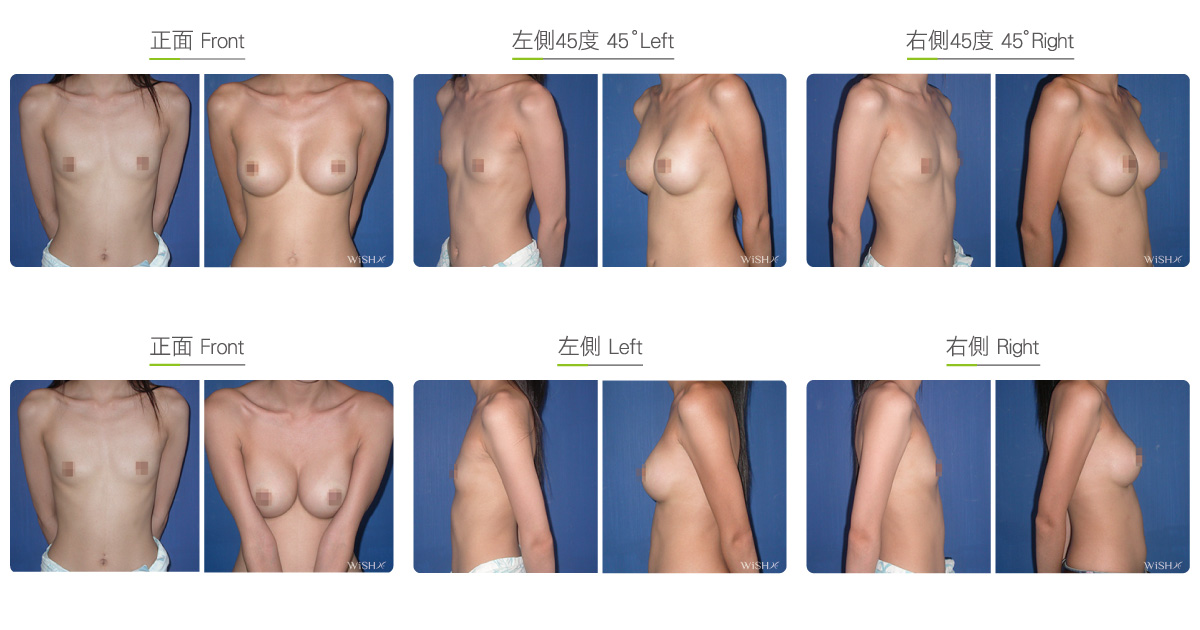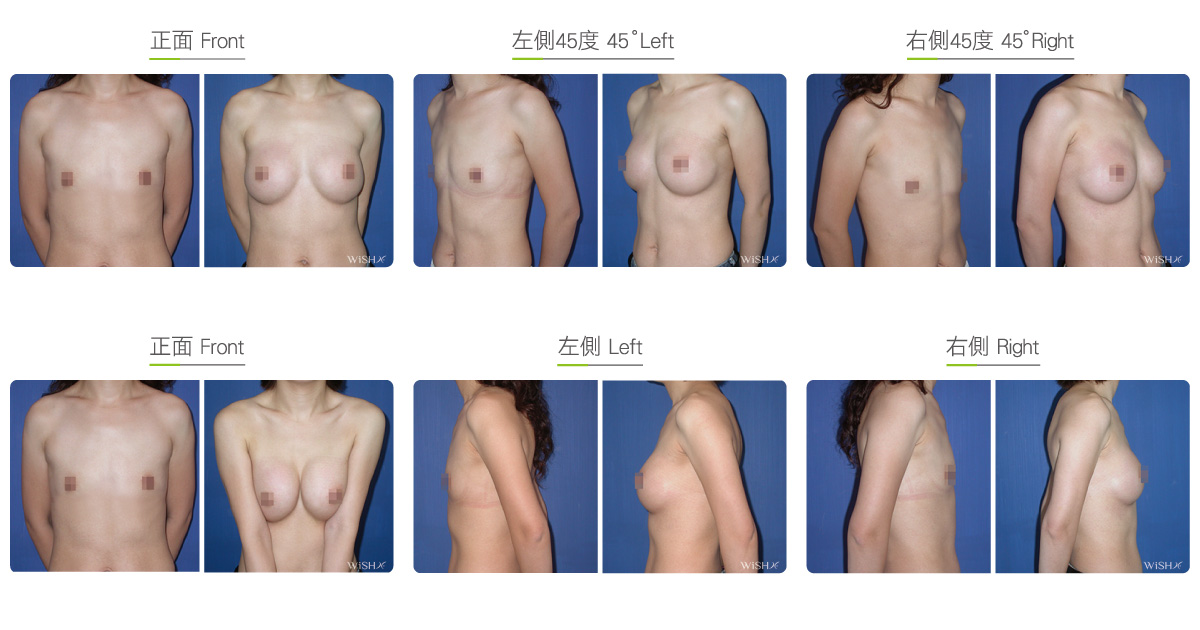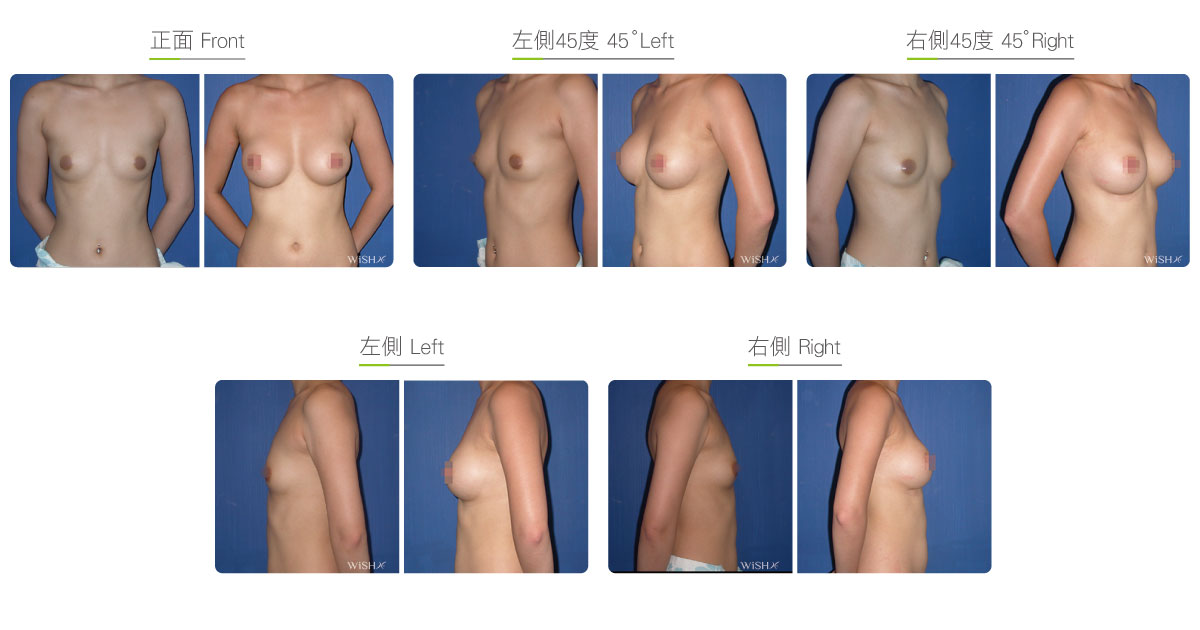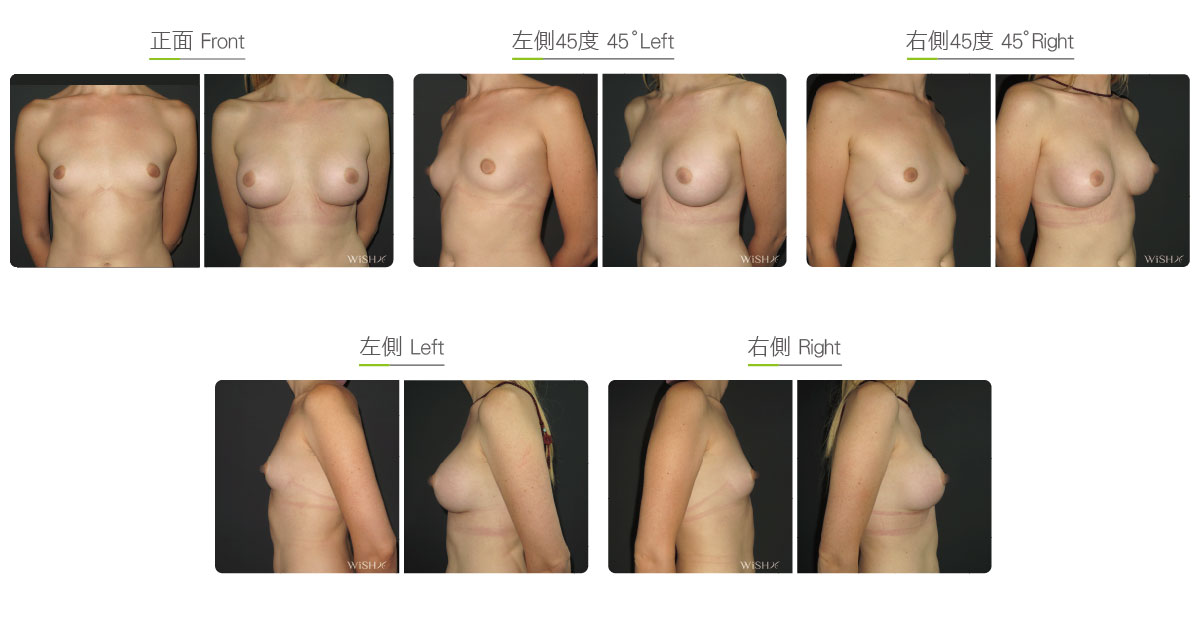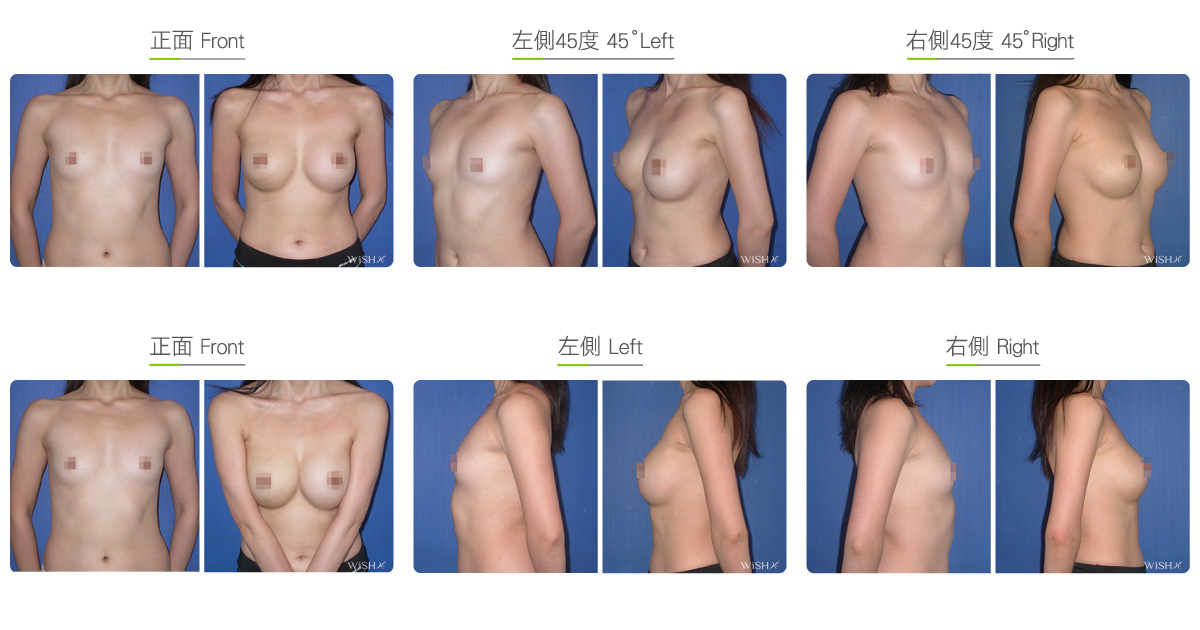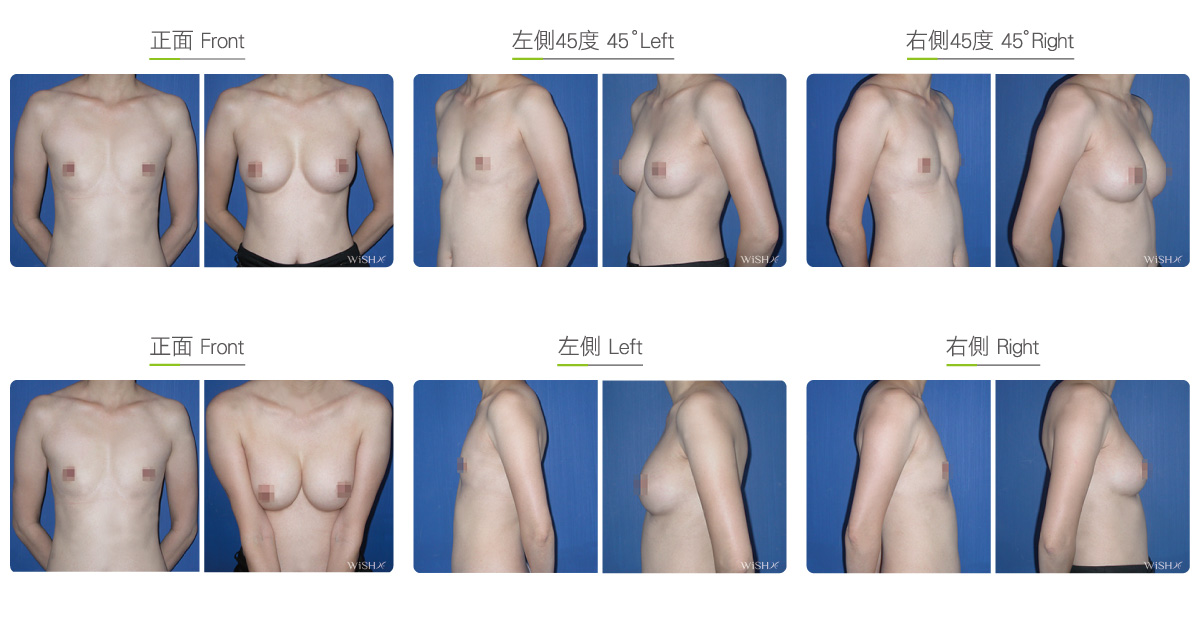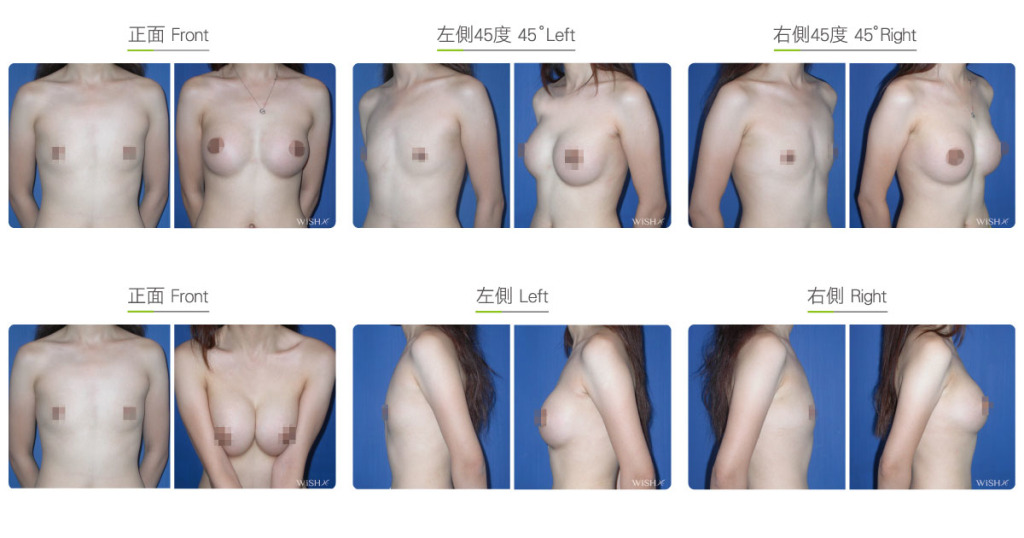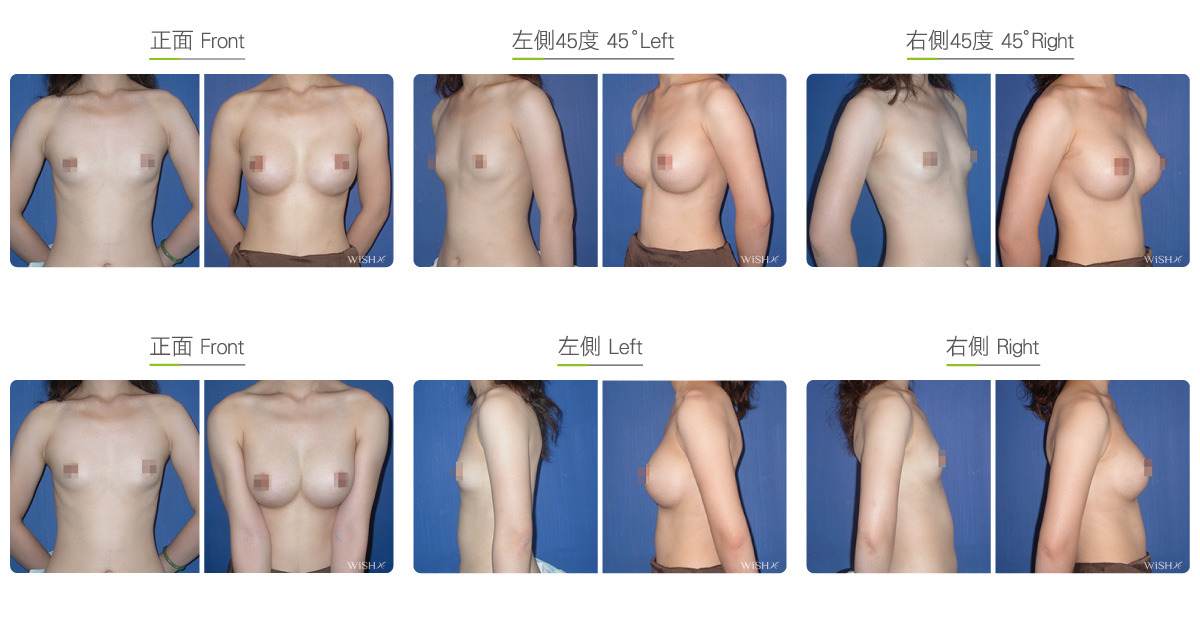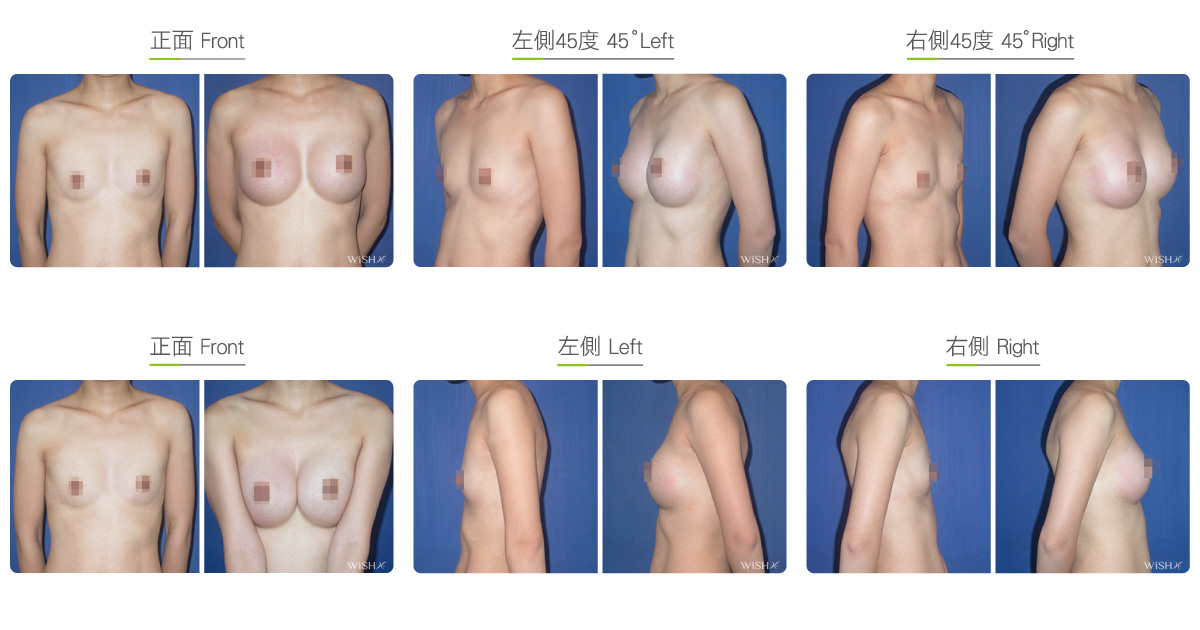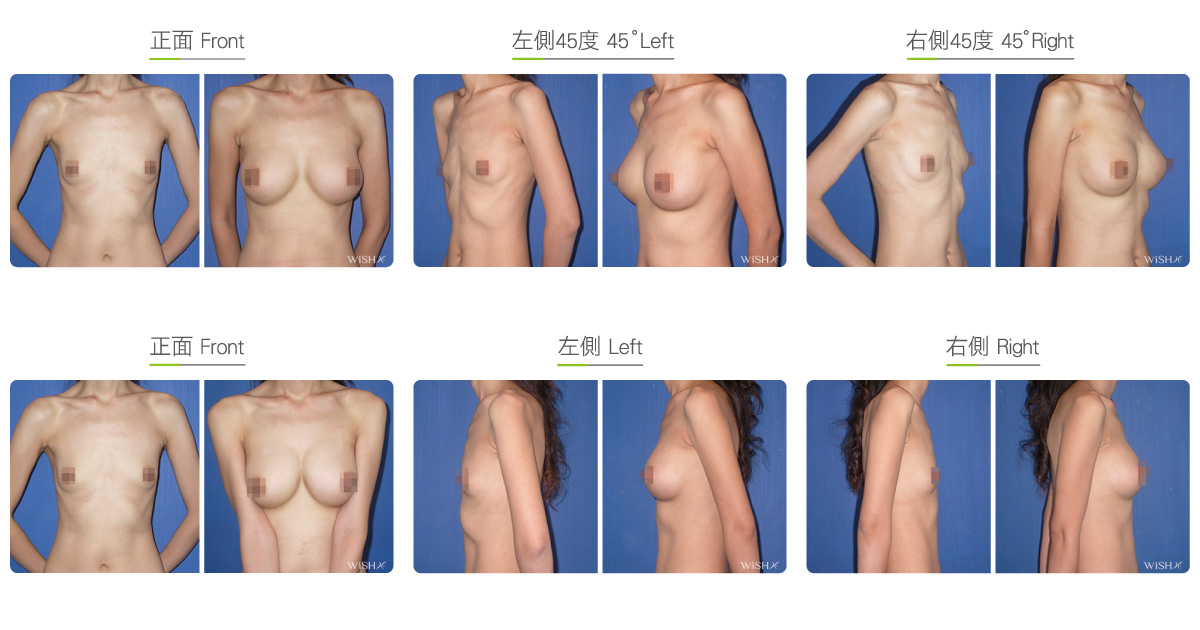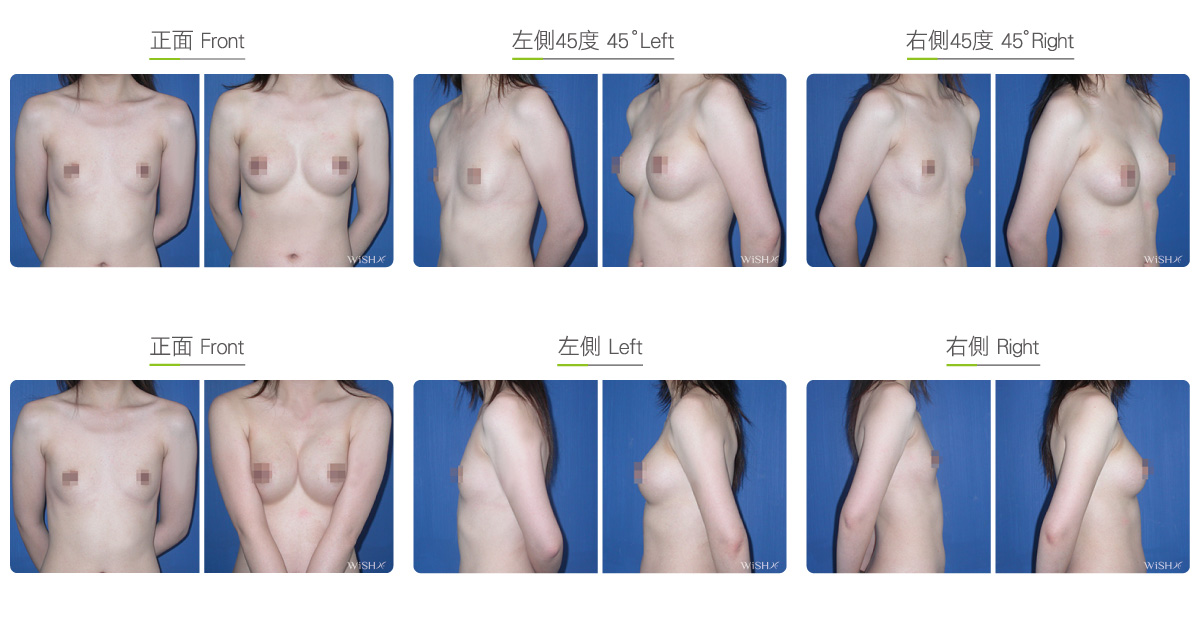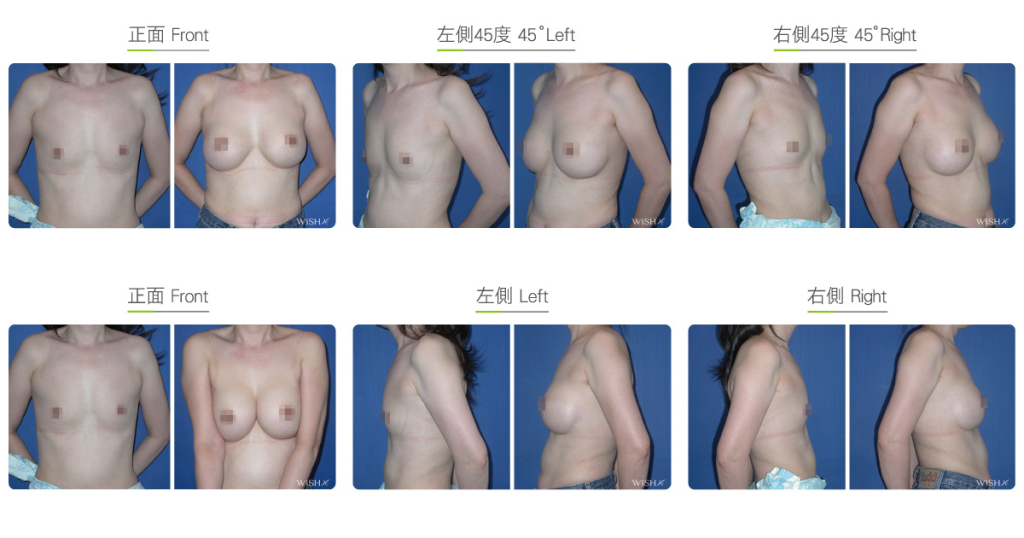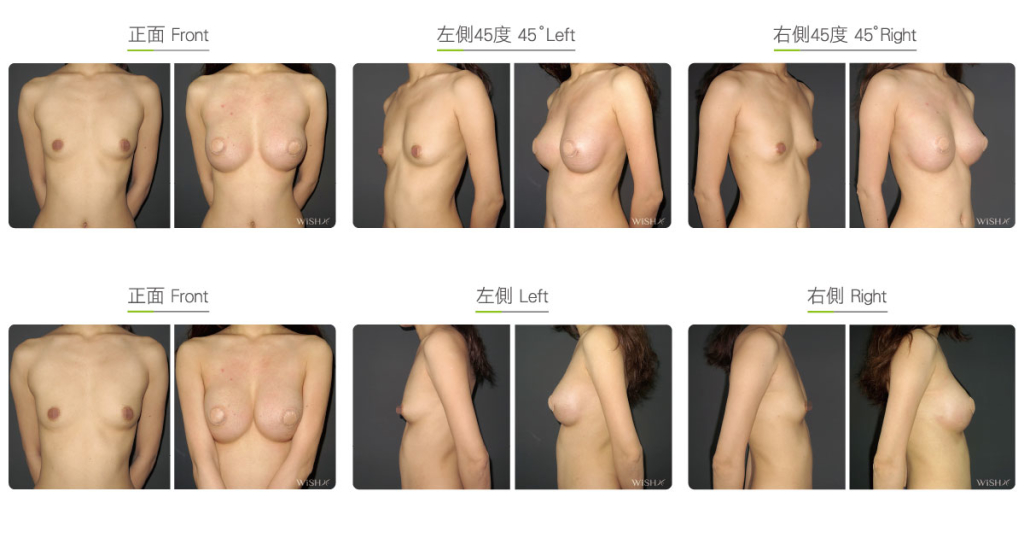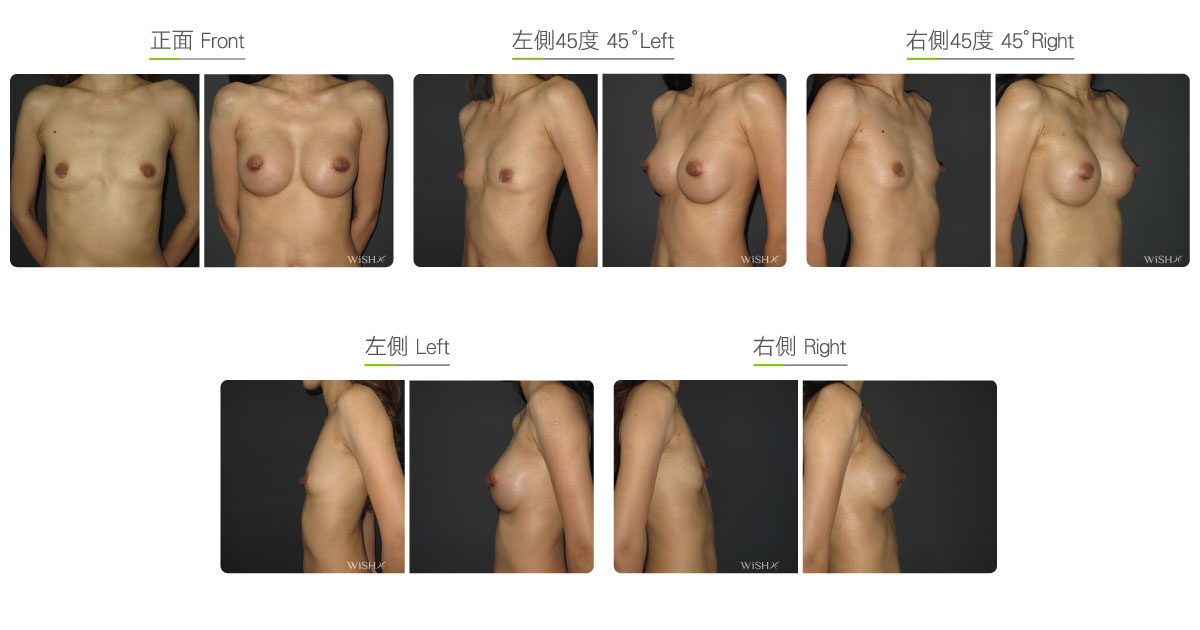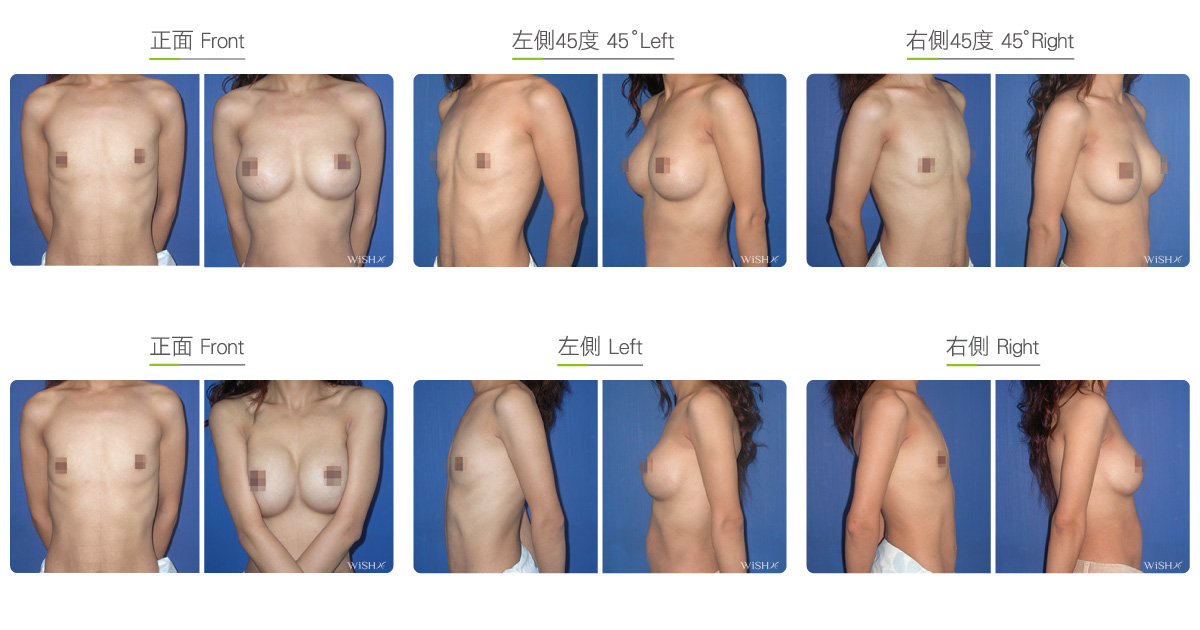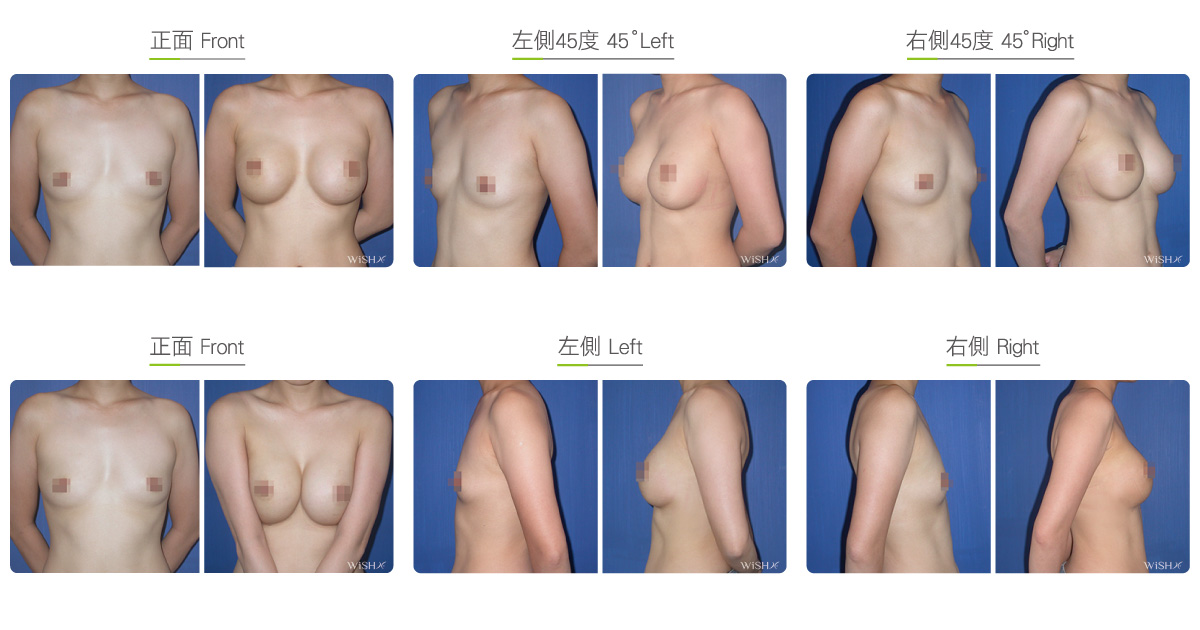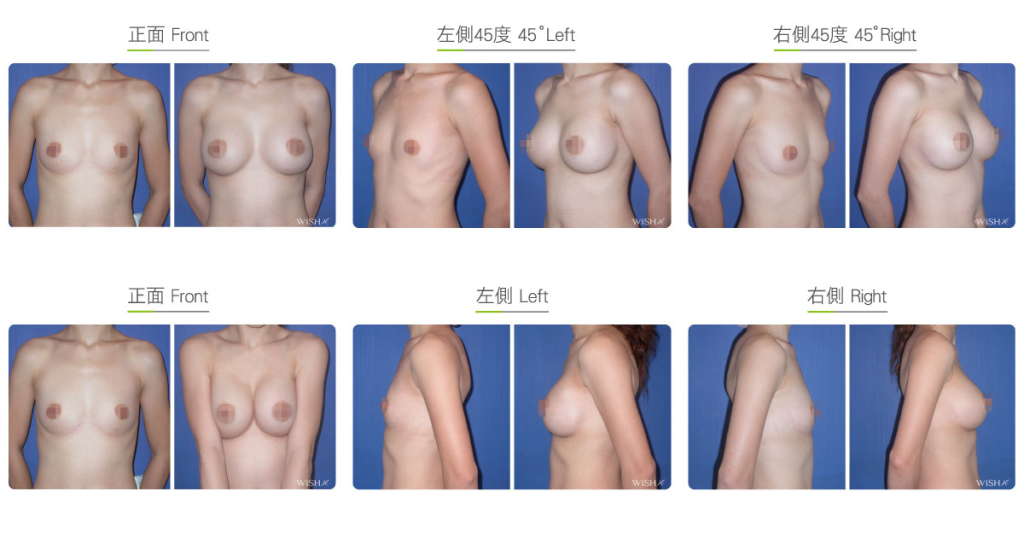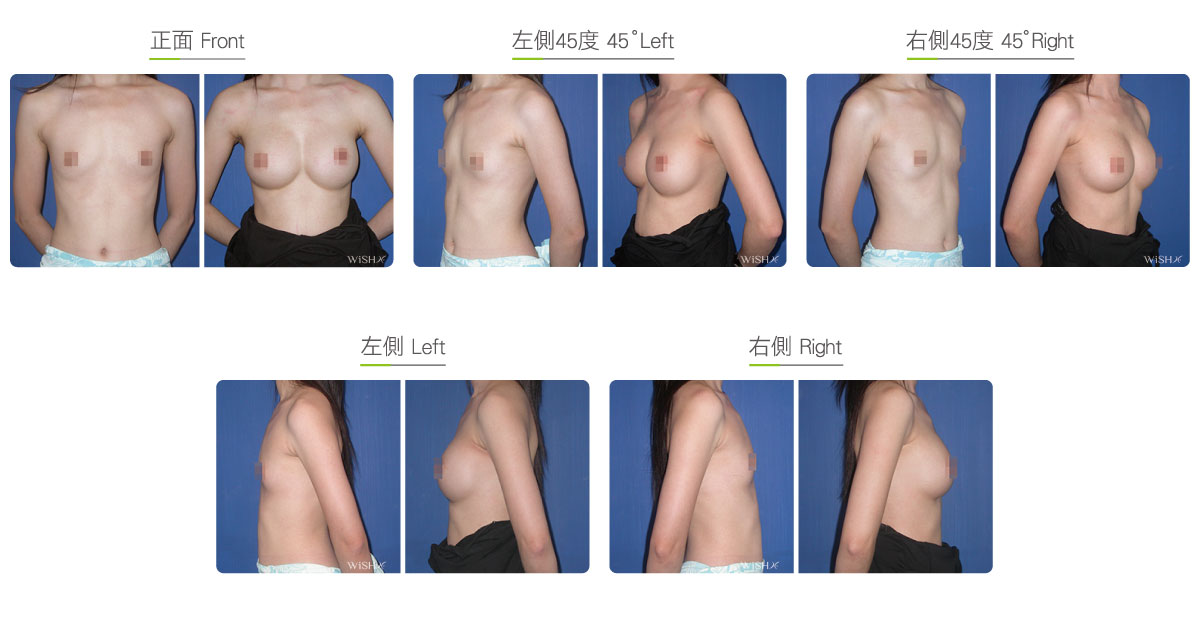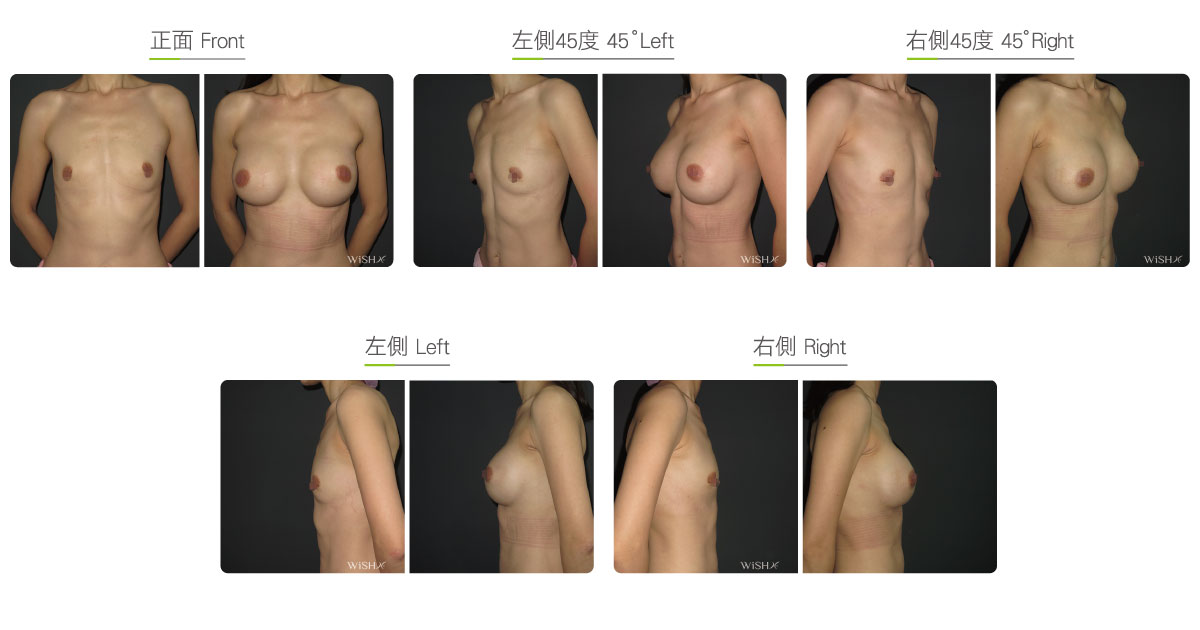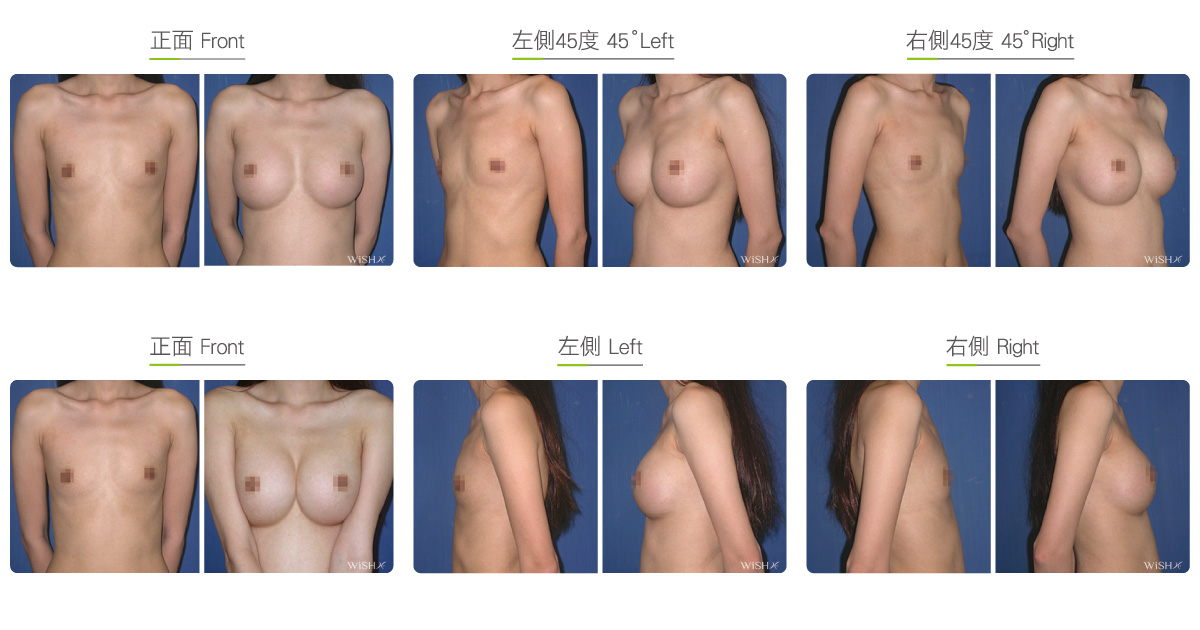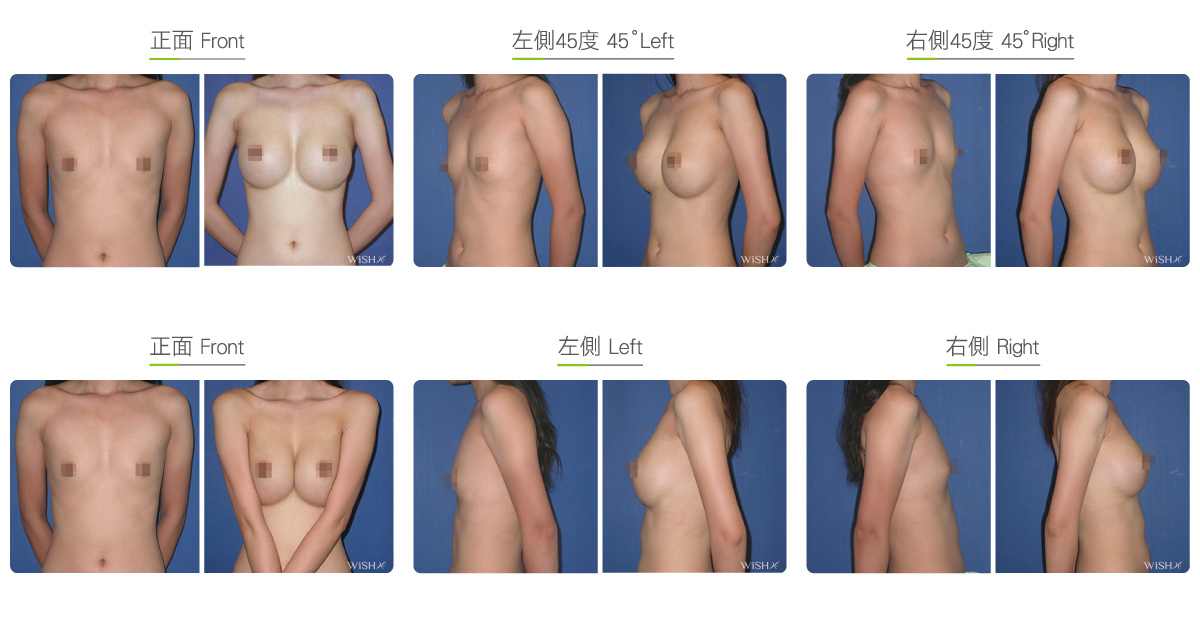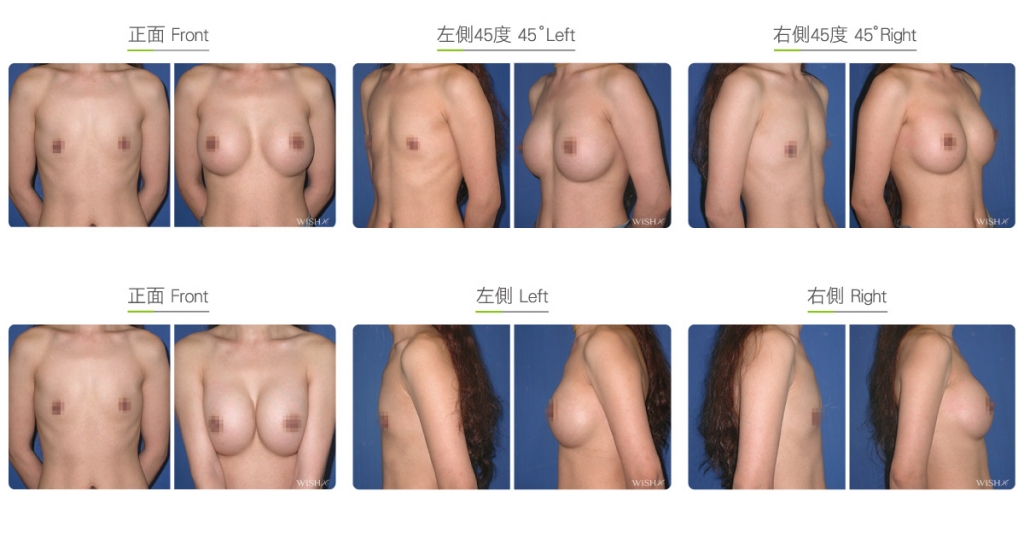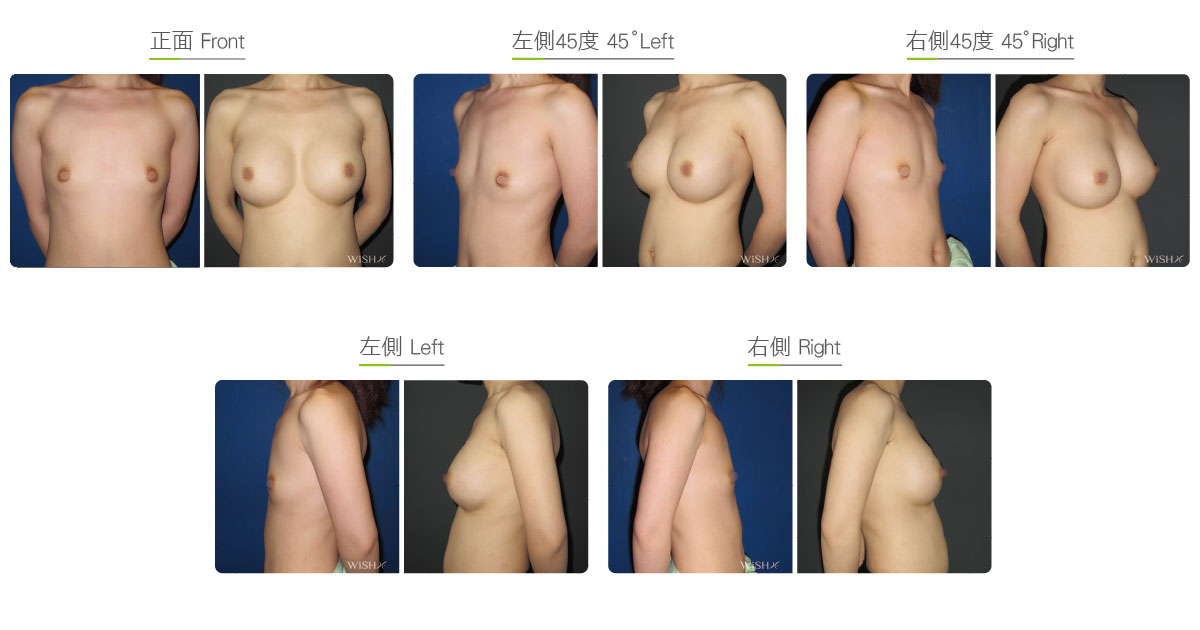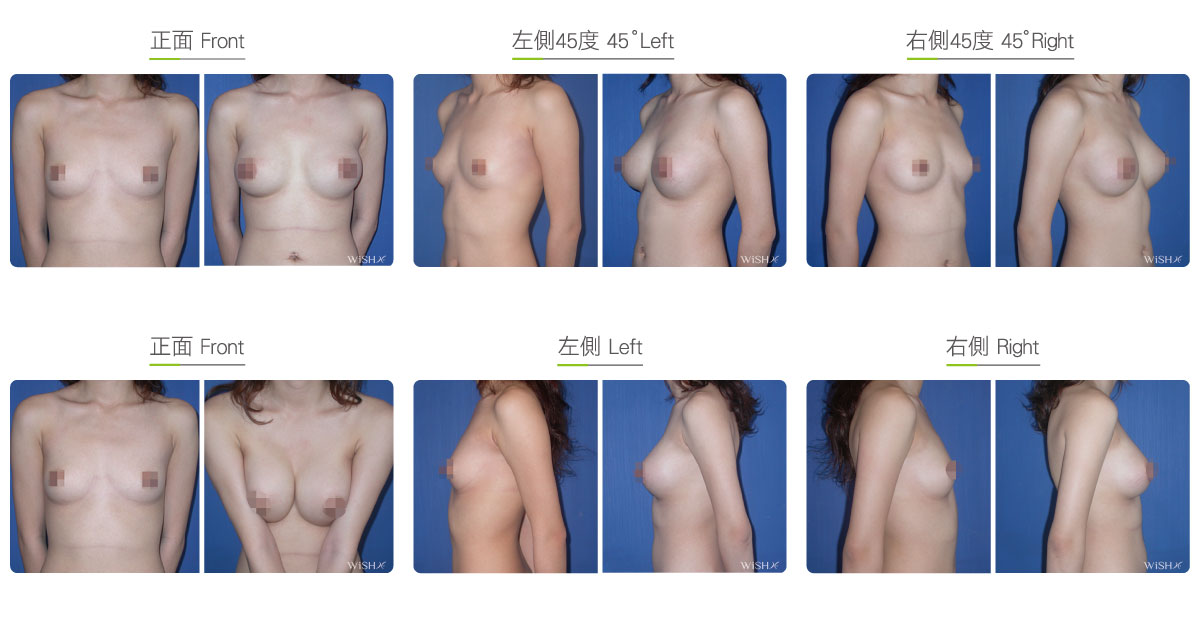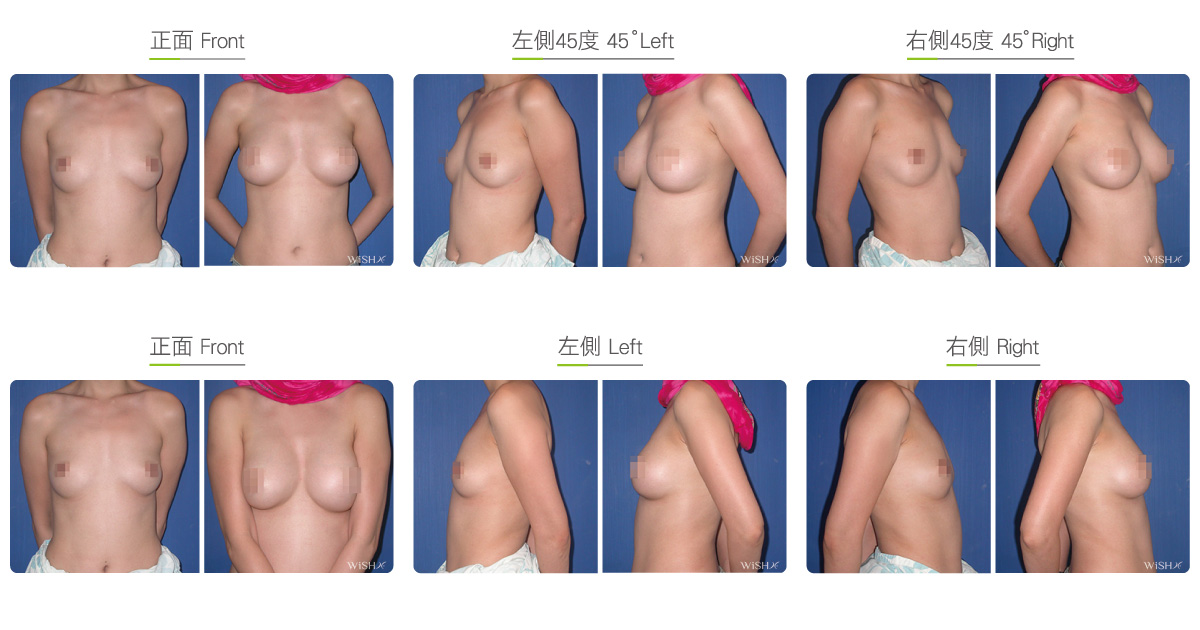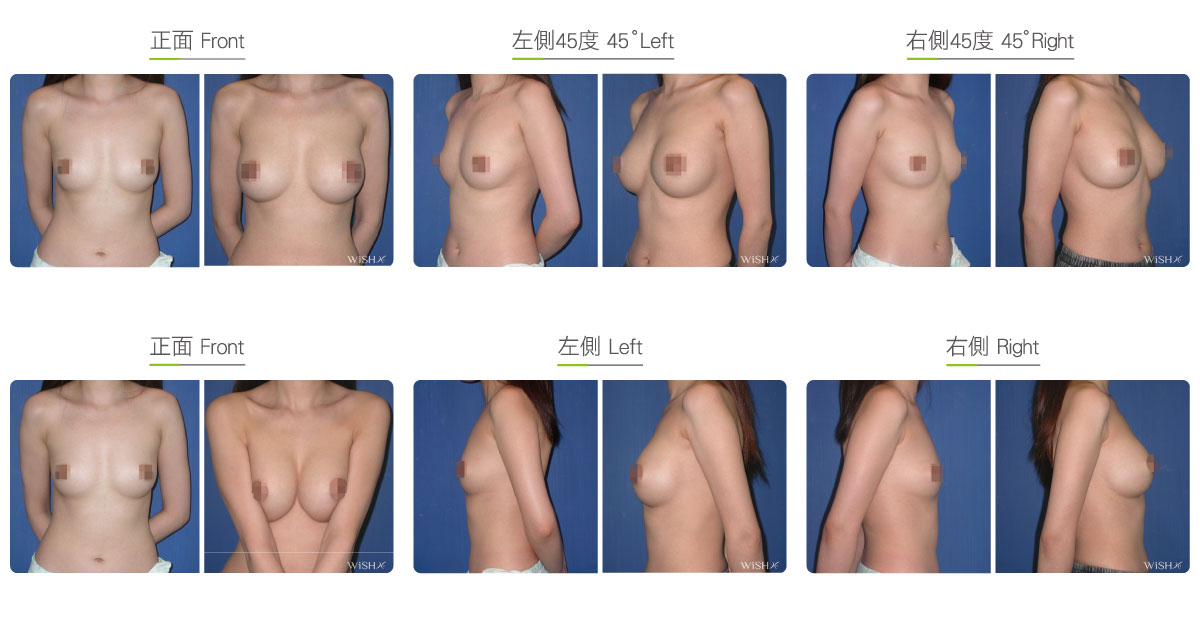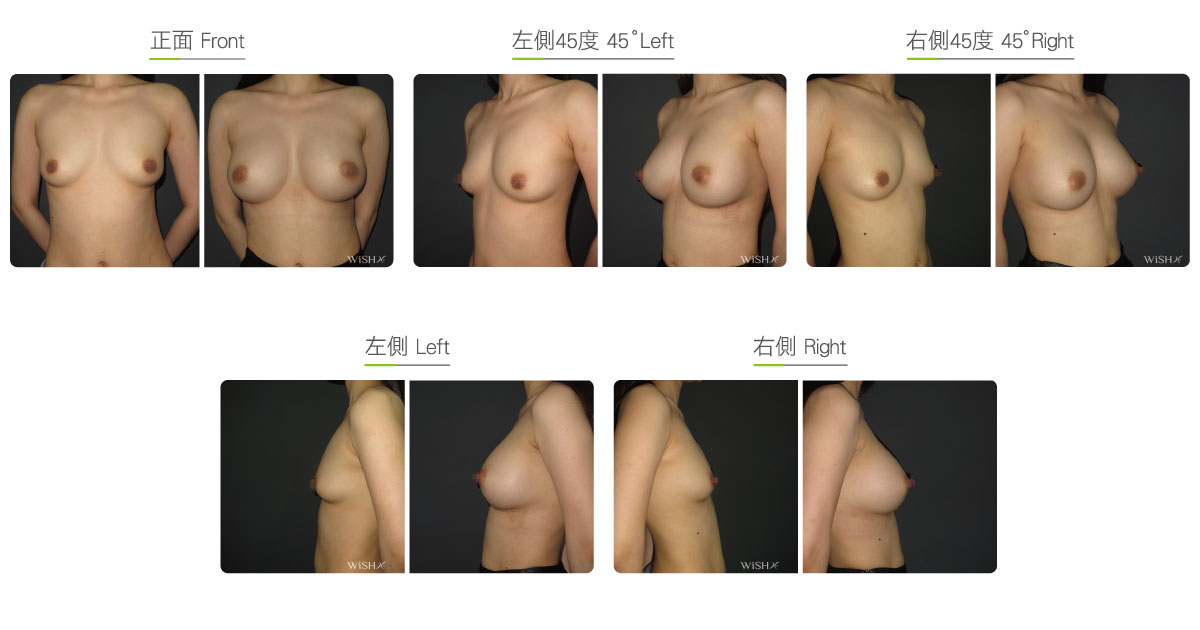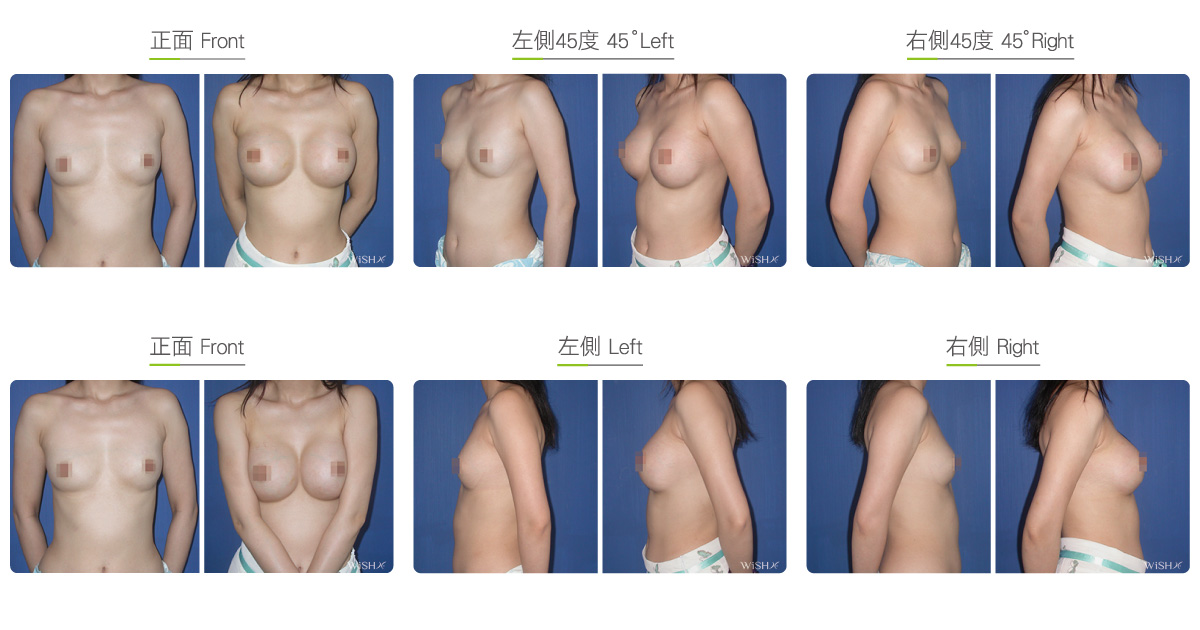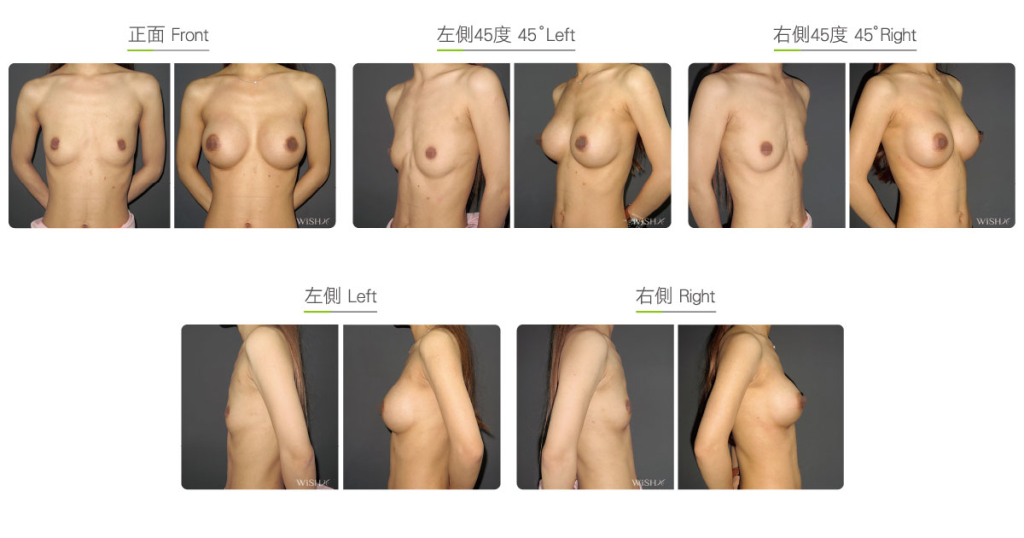Subpectoral Breast Augmentation
It is currently the most common method of breast augmentation and is ideal for Asian women who often have relatively slim body types. This procedure places implants under the pectoralis major muscle and can be performed using transaxillary, periareolar, or inframammary incision or transumbilical breast augmentation (TUBA). Patients can freely choose between silicone gel or saline implants, both of which have smooth surfaces, or textured implants that require less massage. However, if one chooses TUBA, then only saline implants can be used. Dr. Chuang utilizes the latest high-definition endoscopy throughout the procedure to ensure the completeness and stability of tissue separation and to avoid possible complications such as nerve damage or bleeding that are associated with the traditional separation method.
This surgery places implants at the bottom-most layer of breast tissues, which are covered by thick soft tissues and the pectoralis major muscle. Therefore, it is ideal for patients who are thin or completely flat chested because implants are not felt by touch; edges or wrinkles are less obvious even with saline implants. However, this procedure requires the incision of some muscle tissues and results in more noticeable swelling and bruising. In addition, more pain could be observed after the procedure. Inappropriate breast massage could result in capsular contracture or breast deformation. In addition, for 3 months after surgery, patients should refrain from exercising, lifting weights using their arms, and wearing underwired bras to prevent implant suppression, which could cause the deformation or shrinkage of the internal space of the breasts. Patients in certain professions, such as athletes, dancers, or those involved in outdoor activities, should avoid submuscular implants because frequent arm activity can affect the shape and softness of the breasts.
Surgical conditions
Duration
- Type of anesthesia: General or epidural anesthesia
- Type of incision: Transaxillary, periareolar, inframammary, or umbilical (TUBA) incision
- Recovery: Within 2–3 days
- Removal of stitches: 7–10 days
General instructions
Fasting with no food and water before the procedure
- Frequent stretching should be performed for 1 month postoperatively to prevent axillary scar adhesion.
- Tasks and exercises that require excessive arm strength should be avoided, and underwired or push-up bras should not be worn for 3 months postoperatively.
- Smoking and consumption of collagen or vitamin C should be avoided for 3 months postoperatively to prevent the formation of capsules.
- Consistent and regular breast massage should be performed for 6 months postoperatively to maintain breast shape and softness.
Ideal candidates
- Those with saline implants
- Those with a flat chest, A cup, or pectus excavatum
- Those with breast tissue thickness less than 2 cm
- Those with front chest skin thickness less than 1 cm
- Those who desire both large-size implants and a natural look
- Those who care if implants can be felt by touch
Possible complications
- Capsular contracture (8 – 15%)
- uneven breast height
- scar adhesion (underarms)
- hypertrophic scarring (areola)
- implant leakage or rupture
- insensitive or oversensitive nipples (temporary)
Surgical advantages
-
Ideal for patients with poor breast augmentation in whom surgery can help attain a more natural look and touch.
-
Implants are placed deep inside the breast, and edges or wrinkles are less noticeable by touch.
-
Either saline or silicone implants available.
-
Ideal for textured implants and does not require massage
Surgical drawbacks
-
Some muscle tissue needs to be damaged; postoperative pain and swelling are more obvious.
-
Postoperative massage could be more painful and require longer care (approximately ≥6 months).
-
If breast massage is neglected, the chances of getting capsular contracture increase.
-
Irregular movement may be observed when using chest muscles.
-
Tasks or sports involving arm strength should be avoided for at least 3 months after surgery.
-
Not ideal for professional athletes, dancers, or those involved in outdoor activities
Possible procedures in conjunction
Comparison between Saline and Silicone Implants
| Saline Implants | Silicone Implants | |
|---|---|---|
| Material of outer shell | Elastic silicone | Elastic silicone |
| Inner filling | Sterile saline solution | Semi-solid (gelatin-like) silicone gel |
| Method of operation | Filled during the procedure | Implanted whole |
| Size of incision | Less than 2 cm | 3–4 cm |
| Touch of breast | Soft but may feel rippled or like a water balloon | More elastic, closer to the density of skin |
| Rippling of implant | Possible | Less likely |
| Incidence of leakage | High | Low |
| Lifespan | Approximately 10 years | Approximately 15–20 years (can be used longer if there is no rupture) |
| Symptoms of rupture | Breasts would immediately deflate and shrink | Would take longer to notice a gradual shrinkage or deformation of breasts |
| Routine follow-up | Not necessary | Every 2 years |
| Method of follow-up | Breast palpation | Breast ultrasound or MRI |
| Risk of cancer | None | None |
| Breastfeeding | Possible | Possible |


